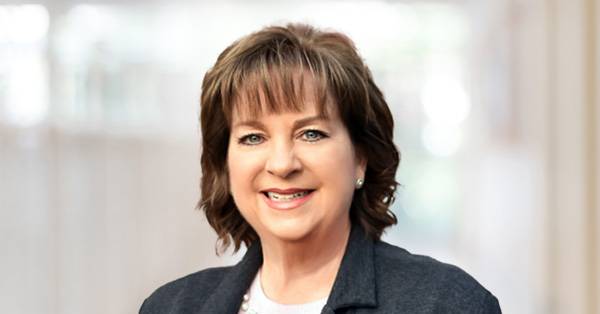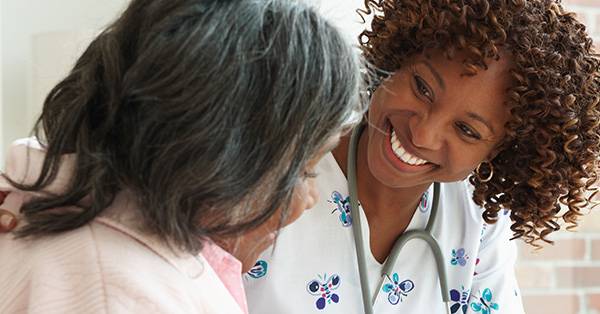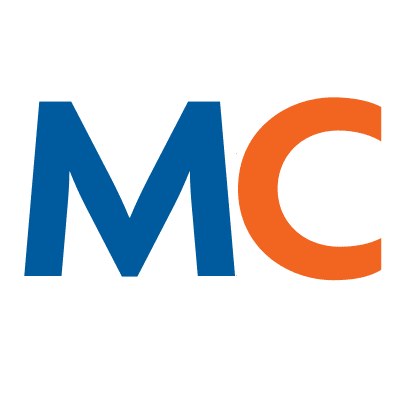- Solutions
- Solutions
- Home Health
- Hospice
- Life Plan Community
- Palliative Care
- Private Duty
- Senior Living
- Skilled Nursing
- Skilled Nursing
- Skilled Nursing Software
- Advanced Insights
- Customer relationship management
- Data and analytics
- Financial & operations management
- Marketing
- Nutrition management
- Referral management
- Regulatory compliance
- Retail management
- Resident engagement
- Revenue cycle management
- Skilled nursing interoperability
- Partners
- Blogs
- Resources
- About
- User Conference

Protect your asset: Tips to increase clinician satisfaction and retention
While clinicians are a vital asset for home health and hospice providers, retaining them continues to be a challenge. They’re overworked, underpaid and leaving the industry in record numbers.
According to the Health Resources and Services Administration (HRSA), more than half of RNs have considered leaving their primary positions. As seen in the chart below, better pay and burnout are the leading causes of turnover, followed by inadequate staffing, stressful work environments and others.

Staffing shortages are an ongoing industry issue, but improving retention is possible. In this blog, we explore how the right technology can provide solutions for many of the challenges clinicians face every day — ultimately helping to increase clinician satisfaction and retention.
Make staff feel supported by making work-life balance a reality
Prioritize your EHR technology to optimize efficiencies for your clinicians. While many EHRs require the use of laptops or phones to document care, choosing technology that simplifies clinicians’ everyday jobs will not only increase productivity, but will also boost satisfaction.
Additionally, technology that allows clinicians to document at the point of care instead of at home promotes a better work-life balance and supports more connected care.
To achieve this level of support, it’s important to have a cohesive leadership team that is open to feedback as well as training when onboarding new staff.
“Our clinicians are able to document during the day while they’re seeing their patients or at the bedside. Then at the end of the day, their documentation is done, which helps a lot with work-life balance.”
–Angela Leonzi, RN, VP of Patient Care Services, Stratford VNA
Make technology easy to use
Clinicians are already overworked, so don’t let their digital tools create even more of a burden. Here are three ways technology should offer support through ease of use:
Point of care
Point-of-care documentation should allow clinicians to reassess the plan of care and make immediate changes as needed when they are in the patient’s home. This proactive approach helps to decrease the probability of errors and increases the quality of patient care — ultimately increasing efficiency of documentation and allowing clinicians the bandwidth to focus more on patients. Point-of-care technology:
- Allows the clinician to address any alerts or interactions in real time.
- Promotes continued education with the patient and caregiver regarding their current plan of care.
- Helps to eliminate duplicate work such as re-entering handwritten notes into the EHR.
- Reduces the risk of incomplete or inaccurate documentation.
Communication
Tools should allow clinicians to easily communicate with patients, family members and care teams in an efficient manner instead of using phone calls and fax.
Compliance
When compliance is built into EHR technology, clinicians get guided compliance support, from intake to end of care. It also provides guidance for staff such as the inability to submit HIS or OASIS assessments to CMS if required fields are not filled correctly or left blank.
Make the right technology choice
The MatrixCare difference is defined by our many features built to prioritize work-life balance for clinicians and patient-centric care for those they serve — because with the right tools, patients are more likely to have positive outcomes and staff are more satisfied.
Our innovative platform provides support for compliance, robust insights to guide care, simplified documentation to save time on tedious tasks, voice-to-text capabilities, alerts and reminders to help reduce errors, and on- and offline support for varying connectivity (a significant help for rural home visits).
Here are just a few more solutions we deliver:
Interoperability
With an EHR built for interoperability, home health and hospice providers can transition care more efficiently, coordinate care more effectively and manage medications more accurately — all with connectivity to networks such as CommonWell Health Alliance, Carequality and SureScripts.
Intake and admissions
Intake success starts with the effective exchange of information. Our technology features integrations trusted to streamline the flow of patient data efficiently and securely, ultimately helping to avoid delays in care.
This includes seamlessly importing patient hospital records from systems like CarePort and naviHealth, securely messaging documents and discrete data elements through the DirectTrust network, and reconciling patient medication lists automatically through a mobile device via SureScripts, C-CDA reconciliation, and CommonWell.
- Use a mobile device to conveniently scan documents or take photos that are then stored securely in the patient record.
- Verify commercial eligibility status with automatic and on-demand checks.
- Connect with patient health records easily and share documents with connected providers via CommonWell Health Alliance and Carequality.
Point of care
MatrixCare’s intuitive application promotes point-of-care documentation, allowing clinicians to document and tap into a robust patient history both on- and offline. This on-the-go approach to documenting care improves accuracy, productivity and staff satisfaction — because it can be completed at the bedside.
- Built-in logic provides skip patterns that help eliminate unnecessary documentation and reduce redundant charting — ultimately allowing for more focus on the patient and less time staring at a screen.
- Mapped interventions deliver better work-life balance by helping to promote documentation against the plan of care, reduce redundancy and improve consistency.
- Care Touch Logic allows clinicians to document by exception by only expanding applicable fields based on the documentation of the patient’s acuity.
“MatrixCare makes us successful. They help drive us to be able to deliver the quality care that we know our patients deserve, and to maintain our employee satisfaction.”
–Janell Solomon, Director of Compliance, Sangre de Cristo Community Care
Patient and family engagement
Providers can stay connected to families with engaging digital tools that securely exchange messages and electronic documents in real time. Our built-in video chat solution supports both patient-to-staff and staff-to-staff communication.
- Capture electronic signatures and integrate them into the EHR to save into the patient record.
- Provide 24/7 telehealth, remote patient monitoring, and health assessments with Health Recovery Solutions (HRS) integration.
- Offer after-hours triage and nursing support — MatrixCare populates the Total Triage/CareXM application via FHIR-enabled integration.
Built-in compliance
With the MatrixCare EHR, providers get guided compliance support built into every step of the care journey, from intake to end of care.
Are you experiencing poor clinician retention? Connect with us today to learn how the right technology can help.
See what MatrixCare can do for you
Mona Landra, BSN
With over 40 years of experience in healthcare, Mona Landry has learned the industry from the ground up — from field nursing to administration. Mona, BSN and Senior Clinical Solution Consultant with MatrixCare Home Health and Hospice, has been with MatrixCare for 13 years, where she began in the implementation division and then moved to her current role. As a former customer, she has seen the transition of the product and the advancement ResMed has brought to the industry — and she can’t wait to help others experience the true benefits of MatrixCare.
Related Posts



The Hospice FY 2025 Final Rule is released: What are next steps to be taken by hospices?
READ MORE >>
See MatrixCare in action
Start by having a call with one of our experts to see our platform in action.
MatrixCare offers industry-leading software solutions. Thousands of facility-based and home-based care organizations trust us to help them improve efficiency and provide exceptional care.



